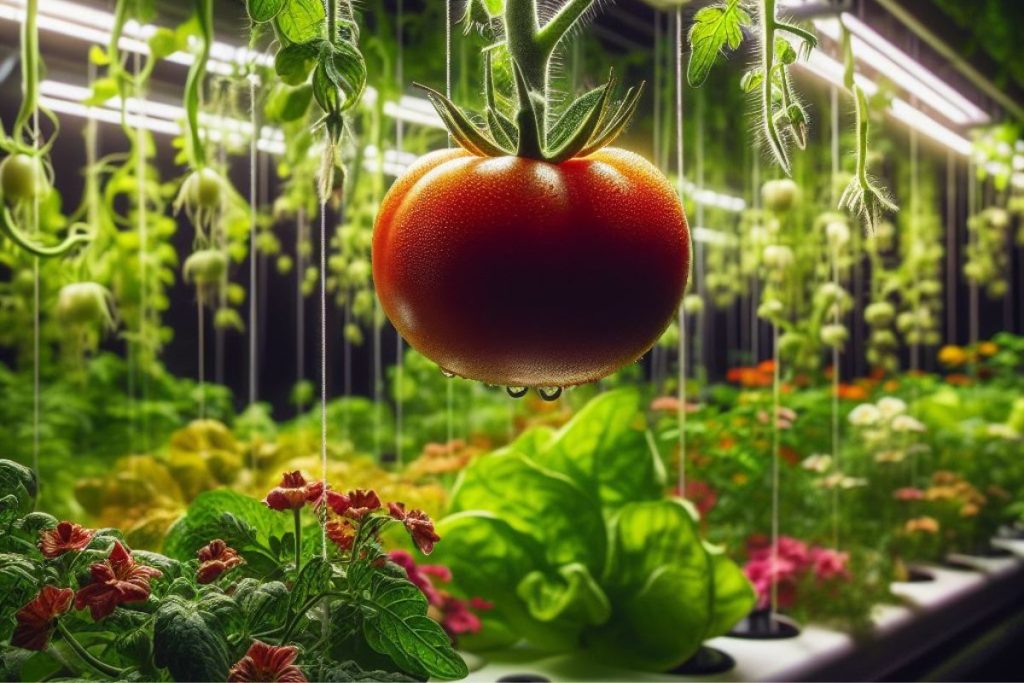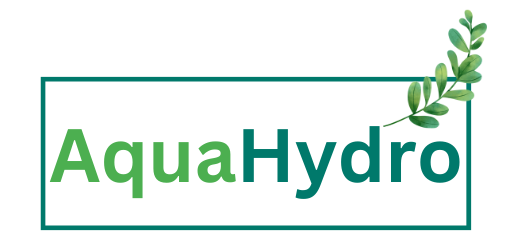Aquaponics, a marriage of aquaculture and hydroponics, is gaining popularity as an innovative and sustainable way to grow crops. Among the various plants thriving in aquaponic systems, tomatoes stand out for their versatility and taste. In this article, we’ll explore the world of aquaponic tomatoes, from the basics of the system to harvesting and enjoying the fruits of your labor.
The Basics of Aquaponics
Aquaponics is a closed-loop system that combines fish farming and hydroponic plant cultivation. The fish waste provides nutrients for the plants, and the plants help filter and purify the water for the fish. The primary components include fish tanks, grow beds, and a water circulation system.
Benefits of Aquaponic Tomatoes

Organic and Sustainable Farming
Aquaponic tomatoes are grown without synthetic fertilizers, making them an excellent choice for those seeking organic produce. The closed-loop system minimizes environmental impact and promotes sustainable agriculture.
Reduced Need for Fertilizers
Traditional farming often relies on chemical fertilizers, contributing to soil degradation and water pollution. With aquaponics, fish waste serves as a natural fertilizer, reducing the need for external additives.
Water Conservation
Aquaponic systems use water efficiently, recirculating it between the fish tanks and grow beds. Aquaponics requires significantly less water than traditional soil-based farming, addressing concerns about water scarcity.
Setting Up Your Aquaponic Tomato Garden

Choosing the Right Fish Species
Not all fish are suitable for aquaponics. Tilapia and trout are popular choices due to their hardiness and nutrient-rich waste. Research the specific requirements of each species to ensure compatibility with your system.
Selecting Tomato Varieties for Aquaponics
Certain tomato varieties thrive in aquaponic environments. Look for determinate or dwarf varieties that suit the limited space of grow beds. Consider factors such as taste, size, and disease resistance when making your selection.
Establishing the System: Step-by-Step Guide
- Set up the fish tank and introduce the chosen fish species.
- Install the grow beds above the fish tank, ensuring proper support.
- Connect the water circulation system, allowing nutrient-rich water to flow to the plants.
- Monitor the system for a few days to ensure stability and adjust as needed.
Maintaining a Healthy Aquaponic System
Monitoring Water Parameters
Regularly check pH levels, ammonia, nitrate, and nitrite concentrations to maintain a balanced environment. Sudden changes in these parameters can impact both fish and plant health.
Controlling Pests and Diseases
While aquaponic systems are less susceptible to soil-borne diseases, pests can still pose a threat. Inspect plants regularly, and introduce natural predators if necessary. Avoid chemical pesticides that may harm the fish.
Ensuring Optimal Conditions for Both Fish and Plants
Maintain proper water temperature and ensure adequate aeration for the fish. Adjust lighting conditions for the plants, providing the optimal spectrum for photosynthesis.
Harvesting Aquaponic Tomatoes

Signs of Ripe Tomatoes
Observe the color, texture, and size of the tomatoes. Ripe tomatoes should have vibrant colors, and a firm texture, and meet the specific characteristics of the chosen variety.
Harvesting Techniques
Carefully twist or cut the tomatoes from the vine to prevent harm to the plant. Harvest regularly to encourage continuous fruit production throughout the growing season.
Maximizing Yield
Prune the tomato plants to improve air circulation and sunlight exposure. Proper spacing between plants and adequate nutrient levels contribute to a bountiful harvest.
Recipes and Culinary Tips
Showcasing Aquaponic Tomatoes in Various Dishes
From fresh salads to savory sauces, aquaponic tomatoes enhance various dishes. Try your hand at homemade salsa, caprese salad, or a classic tomato soup to savor the unique flavor of home-grown tomatoes.
Taste and Nutritional Benefits
Aquaponic tomatoes are renowned for their rich, full flavor. The controlled environment of aquaponics allows for optimal nutrient absorption, resulting in tomatoes with enhanced taste and nutritional value.
Common Challenges in Aquaponic Tomato Farming
Troubleshooting Water Quality Issues
Cloudy water, unusual odors, or changes in fish behavior may indicate water quality issues. Perform regular water tests and address any issues promptly to prevent harm to the fish and plants.
Dealing with Potential Pest Problems
Common pests include aphids and whiteflies. Introduce beneficial insects like ladybugs or implement natural repellents to keep pests at bay without resorting to harmful chemicals.
Preventing System Failures
Regularly inspect and maintain the system components. Check for leaks, clogs, or malfunctions that may compromise the integrity of the aquaponic system. Regular cleaning and preventative measures can prevent unexpected failures.
Success Stories
Real-Life Examples of Successful Aquaponic Tomato Farms
Discover inspiring stories of individuals and communities who have successfully cultivated thriving aquaponic tomato gardens. Learn from their experiences, challenges, and triumphs as they contribute to the growing movement of sustainable and innovative farming practices.
Testimonials from Enthusiasts
Read testimonials from aquaponics enthusiasts who have not only enjoyed the delicious taste of home-grown tomatoes but also embraced the eco-friendly and sustainable aspects of aquaponic farming. Their firsthand accounts provide valuable insights for newcomers to the world of aquaponics.
Environmental Impact of Aquaponic Farming
Comparing Environmental Footprint with Traditional Farming
Explore the environmental benefits of aquaponic farming, including reduced water usage, elimination of chemical fertilizers, and minimized soil erosion. Understand how this method stands as a promising solution to address some of the sustainability challenges faced by traditional agriculture.
Contributions to Sustainability and Conservation
Aquaponic systems play a role in conserving water resources and reducing the ecological impact of farming. Delve into how aquaponic tomato farming aligns with broader efforts to create a more sustainable and environmentally conscious approach to food production.
Community and Networking Opportunities
Joining Aquaponics Communities
Connect with like-minded individuals by joining online forums, social media groups, or local community organizations dedicated to aquaponics. Share your experiences, seek advice, and be a part of a community passionate about sustainable agriculture.
Participating in Events and Workshops
Stay informed and enhance your aquaponics knowledge by attending workshops, webinars, and events. Engage with experts, learn about the latest advancements, and connect with enthusiasts who share a common interest in aquaponic farming.
Sharing Experiences and Tips
Share your journey in aquaponic tomato farming. Whether you’re a seasoned enthusiast or just starting, your experiences can inspire others. Exchange tips, troubleshoot challenges, and contribute to the collective knowledge of the aquaponics community.
Future Trends in Aquaponic Agriculture
Technological Advancements
Explore the cutting-edge technologies shaping the future of aquaponics. From smart monitoring systems to automated nutrient delivery, discover how technology is revolutionizing the efficiency and productivity of aquaponic farming.
Potential Innovations in Aquaponic Systems
Stay ahead of the curve by exploring potential innovations in aquaponic systems. From modular designs to integration with other sustainable practices, envision the future possibilities that could further enhance the benefits of aquaponic farming.
In conclusion, aquaponic tomatoes offer a unique and sustainable way to enjoy fresh, flavorful produce while contributing to environmental conservation. By understanding the basics of aquaponics, selecting the right fish and tomato varieties, and maintaining a healthy system, you can cultivate a thriving garden. Embrace the community, learn from success stories, and stay informed about the future trends shaping aquaponic agriculture.

